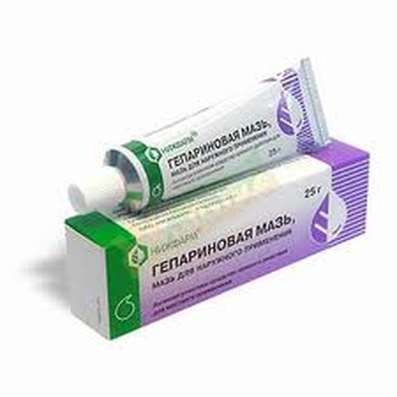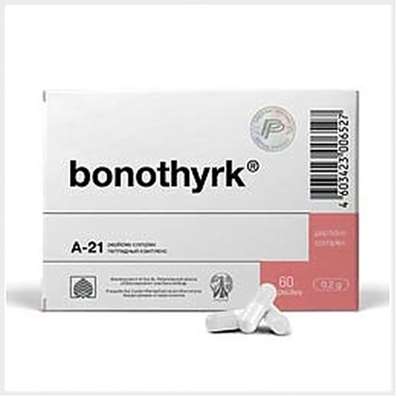Instruction for use: Sibazon
I want this, give me price
Trade name of the drug – Sibazon
Active substance: Diazepamum (genus. Diazepami)
Chemical name: 7-Chloro-1,3-dihydro-1-methyl-5-phenyl-2H-1,4-benzodiazepin-2-one
Dosage Form: solution for injection, tablets
Composition of Sibazon active substance:
diazepam (sibazon) 0.005 g
Excipients: lactose monohydrate (milk sugar); potato starch; calcium stearate (calcium stearate).
Tablets of 5 mg. In blisters Table 10. or lighting glass jar or plastic Table 20. 1 jar or 2 blisters are placed in a pile of cardboard.
Pharmacotherapeutic group: Anxiolytics
ATX Code
N05BA01 Diazepam
The nosological classification (ICD-10)
A35 Other forms of tetanus: Rabies (hydrophobia); Klostridioz wound; Muscle spasms in tetanus; Tetanus; Tetanus is local; Tetanus.
F10.2 alcohol dependence syndrome: Alcoholism; Alcohol addiction; posiomania; Dependence on alcohol; dipsomania; drunken state; alcohol abuse; Ideatornoy violations in alcoholism; Quarterly booze; Obsessive craving for alcohol; Neurotic symptoms of alcoholism; Craving for alcohol; Psychoorganic syndrome in chronic alcoholism; Reduced craving for alcohol; Saint Martin's evil.
F10.3 abstinence: Alcohol withdrawal syndrome; abstinence symptom; Abstinence syndrome in alcoholism; abstinence; alcohol abstinence; alcohol withdrawal; Alcohol abstinence; Alcohol withdrawal syndrome; withdrawal disorder; withdrawal state; alcohol withdrawal syndrome; withdrawal syndrome; The syndrome of alcohol abstinence; alcohol withdrawal syndrome; Status of abstinence.
F10.4 abstinent state with delirium: Delirium tremens; Delirium tremens alcohol; delirium; Delirious state in alcoholism and drug addiction.
F10.5Alcoholic psychosis: Alcoholic hallucinosis; Alcoholic psychosis; Delirium tremens alcohol; delirium; Delirium in alcoholism; Delirious state in alcoholism and drug addiction; Acute alcoholic psychosis; Acute alcoholic psychosis with autonomic disorders; Psychoorganic syndrome in chronic alcoholism.
F40.0 Agoraphobia: Claustrophilia; Fear of staying in a crowd.
F41 Other anxiety disorders: anxiety Relief; Nonpsychotic anxiety disorders; An alarm condition; Anxiety; Disturbingly suspicious condition; Chronic anxiety; Sense of anxiety.
F41.9 Anxiety disorder, unspecified: Severe anxiety; neurosis-like symptoms; neurosis-like disorder; neurosis-like state; Neurosis with anxiety symptoms; Neurosis with anxiety; Neurotic disorders with anxiety syndrome; The acute situational stress and anxiety; The acute situational stress anxiety; Acute anxiety attack; Depressed mood with anxiety elements; Psychopathy with a predominance of anxiety and worry; Sudden anxiety; Situational Anxiety Disorder; An anxiety condition; Soest; Anxious-delirium;
Disturbingly delusional component; anxiety; Anxiety; anxiety disorder; Anxiety disorders; Anxiety disorders in neurotic and neurosis-like states; Anxiety syndrome; Chronic neurotic anxiety; Sense of anxiety.
F48 Other neurotic disorders: Neurosis; Neurological diseases; Neurotic disorders; Neurotic state; Psychoneurosis; Anxious-neurotic state; Chronic neurotic disorders; Emotional reactive disorder.
F48.9 Neurotic disorder, unspecified: Secondary neurotic symptom; Other neurotic state; Neurosis; Neurosis with increased irritability; Neuroses; Neuroses of all kinds; Neuroses with inhibition; neuroses of the heart; Neurotic disorders in alcoholism; Neurotic disorders with inhibition; Neurotic disorders with anxiety syndrome; Neurotic reactions; Neurotic symptoms of alcoholism; Neurotic state; The neurotic syndrome; neurotic disorders; The attack of neurological dysfunction; School neurosis; Emotional stress.
G24.8.0 muscle hypertonicity: Painful muscle spasms in spinal diseases; Increased muscle tone; Increased muscle tone; Increased skeletal muscle tone; The spasm of the striated muscles due to organic diseases of the central nervous system; Spasticity of muscles.
G40 Epilepsy: Atypical seizures; atonic seizures; Large seizures; Large seizures in children; Large seizures; generalized absence seizures; Jacksonian epilepsy; Diffuse large seizure; diencephalic epilepsy; Cortical and non-convulsive forms of epilepsy; Primary generalized seizures; Primary generalized seizures; Primary generalized seizure; Primary generalized tonic-clonic seizure; Piknoleptic absence; Repeated seizures; Fit generalized; Fit convulsive; Refractory epilepsy in children; Sophisticated seizures; Mixed seizures; Mixed forms of epilepsy; convulsive states; seizures; Spasmodic state; Convulsive forms of epilepsy; Epilepsy grand mal; seizures.
G80.0 Spastic Cerebral Palsy: Little's disease; spastic paralysis.
I10 Essential (primary) hypertension: Arterial hypertension; Arterial hypertension; Arterial hypertension crisis course; Arterial hypertension, complications of diabetes; Arterial hypertension; The sudden increase in blood pressure; Hypertensive disorders of blood circulation; Hypertensive condition; Hypertensive crises; Hypertension; Arterial Hypertension; Malignant hypertension; Essential Hypertension; Hypertonic disease; Hypertensive crises; Hypertensive crisis Hypertension; Malignant hypertension; Malignant hypertension; Isolated systolic hypertension; Hypertensive crisis; Exacerbation of essential hypertension; Primary hypertension; Transient hypertension; Essential hypertension; Essential hypertension; Essential hypertension; Essential hypertension.
I15 Secondary hypertension: Arterial hypertension; Arterial hypertension; Arterial hypertension crisis course; Arterial hypertension, complications of diabetes; Arterial hypertension; Renovascular hypertension; The sudden increase in blood pressure; Hypertensive disorders of blood circulation; Hypertensive condition; Hypertensive crises; Hypertension; Arterial Hypertension; Malignant hypertension; Hypertension is symptomatic; Hypertensive crises; Hypertensive crisis; Hypertension; Malignant hypertension; Malignant hypertension; Hypertensive crisis; Exacerbation of essential hypertension; Renal hypertension; Renovascular hypertension; Renovascular hypertension; Symptomatic arterial hypertension; Transient hypertension.
I73.9 Peripheral vascular disease, unspecified: angiospasm; Vasospasm / vasoconstriction; Vasospastic disorders; Violation of venous microcirculation; Violation of circulation; Violation of peripheral blood circulation; Lack of peripheral blood circulation in the lower and upper extremities; Occlusive peripheral arterial disease; Peripheral arterial occlusive disease in stages III-IV at Fontaine; Peripheral vascular insufficiency; Peripheral vascular lesions; Peripheral vascular disorders; Peripheral circulatory disorder; Spasm of the arteries; vascular spasm; Functional peripheral arterial disease; Chronic occlusive disease; Chronic obliterating diseases of the lower limbs; Chronic arterial occlusive disease.
L29 Itching: Dermatitis itching; Dermatoses with persistent itching; Other pruritic dermatoses; Itching of the scalp; Itching of the skin; Itching with partial obstruction of the biliary tract; Itchy eczema; Itchy dermatitis; Itchy allergic dermatoses; Itchy dermatitis; Itching dermatoses; Itching; Itching at the dermatosis; Agonizing itching; Narrow itchy dermatitis; Intense itching; Endogenous itching.
N94.3 syndrome premenstrual tension: Severe premenstrual syndrome; Menstrual psychosomatic disorder; Menstrual syndrome; Premenstrual tension; Premenstrual state; Premenstrual period; Premenstrual syndrome; menstrual syndrome.
N95.1 menopausal and menopausal status of women: Atrophy of the mucosa of the lower genital tract, caused by estrogen deficiency; Vaginal dryness; Autonomic dysfunction in women; Hypoestrogenic state; Deficiency of estrogen in menopausal women; Degenerative changes of the mucous membrane in the menopause; Natural menopause; Intact uterus; Climax; Menopause for women; Menopause in women; Menopausal depression; Climacteric ovarian dysfunction; Menopause; Climacteric neurosis; Menopause; Menopausal symptoms complicated psychovegetative; Climacteric syndrome; Climacteric vegetative disorders; Climacteric psychosomatic disorder; Menopausal disorders; Menopausal disorders in women; Menopausal state; Climacteric vascular disorders; Menopause; Premature Menopause menopausal vasomotor symptoms; Menopausal period; Lack of estrogen; Feeling the heat; Pathological menopause; perimenopause; menopause; postmenopausal period; Postmenopausal period; Postmenopausal period; Post-menopausal period; Premature menopause; premenopausal; Premenopauznom period; Tides; Hot flashes; Tides blood to the face in the Meno and postmenopausal women; Hot flashes / hot flashes in menopause; Heart attack during menopause; Early menopause in women; Disorders of menopause; Climacteric syndrome; Vascular complications of menopause; The physiological menopause; Estrogen-deficient state.
R25.2 Cramp and spasm: Painful muscle spasm; Mimic spasm; Muscle spasticity; Muscle spasms; Muscle spasms in tetanus; Muscle spasms of central origin; Muscle spasms of; Muscle spasm; Neurological contracture with spasms; Night cramps in the limbs; Night cramps in the legs; Night leg cramps; Symptomatic convulsive state; West syndrome; Smooth muscle spasm; Spasm of smooth muscle; Spasm of vascular smooth muscle; Muscle spasms; The spasm of the striated muscles due to organic diseases of the central nervous system; The spasm of skeletal muscles; The spasms of smooth muscles of internal organs; Muscle cramps; The spasms of skeletal muscles; Spastic condition of striated muscle; Spastic pain; Spasmodic state of smooth muscle; Spasticity of the skeletal muscles; Muscle cramps; Convulsions; Leg cramps; Seizures of central origin; Convulsive state; Spastic syndrome; Convulsive status in children; Tonic seizures; The phenomenon of folding knife; Cerebral spastic syndrome.
R25.8 Other and unspecified abnormal involuntary movements: athetosis; Movement disorders; Disturbances of movement.
R45.1 Restlessness and agitation: Agitation; Anxiety; explosive excitability; The internal excitation; Excitability; Excitation; Excitation sharp; psychomotor excitement; hyperexcitability; motor stimulation; Relief of agitation; jitters; restless; Night concern; The acute stage of schizophrenia with excitement; Acute mental stimulation; paroxysm excitation; overexcitement; erethism; Increased nervous irritability; Increased emotional and cardiac excitability; Increased arousal; hyperphrenia; Psychomotor agitation; Psychomotor agitation; Psychomotor agitation in psychosis; Psychomotor agitation epileptic nature; psychomotor paroxysm; psychomotor seizures; excitation Symptoms; The symptoms of psychomotor agitation; Status agitation; Status anxiety; excitation condition; Status of high concern; Condition of psychomotor agitation; anxiety states; excited states; anxiety states with somatic diseases; feeling of excitation; Feeling restless; Emotional arousal.
R45.7 State of emotional shock and stress, unspecified: Exposure to stressors; Exposure to extreme situations; Long-term emotional stress; Neuropsychiatric stress; occupational stress; Psychological stress at interrail; Psycho-emotional overload and stress; Psycho-emotional tension in stressful situations; emotional stress; stress condition; Stress; The stress load; stress state; stressful situations; stress state; The stresses of everyday life; Chronic stress.
Z100.0 Anesthesiology and premedication: Anesthesia; Anesthesia in ENT practice; Anaesthesia in Dentistry; Hypotension during spinal anesthesia; ataralgesia; Basic anesthesia; Fast anesthesia; Introduction to anesthesia; Induction; Excitation before surgery; IVL; inhalation anesthesia; Inhalation anesthesia for large and small surgery; Induction and maintenance of general anesthesia; intraligamentarnaya anesthesia; tracheal intubation; Artificial hibernation; cardioplegia; caudal anesthesia; Caudal blockade; mixed anesthesia; Short-term anesthesia; Short-term infiltration anesthesia in surgery; Short-term local anesthesia; Short-term muscle relaxation; Spinal anesthesia; Local anesthesia; Local infiltration anesthesia; Local surface anesthesia; Miorelaxation; Miorelaxation during mechanical ventilation; Miorelaxation during surgery; Miorelaxation in operations; Miorelaxation during mechanical ventilation; monokomponentny anesthesia; nasogastric intubation; anesthesia; Neingalyatsionnyh anesthesia for operative delivery; Immediate pain relief; general anesthesia; General anesthesia with short-term surgical interventions; General anesthesia; Period premedication; Surface anesthesia in ophthalmology; Maintenance of anesthesia; Preoperative period; anocithesia; conduction anesthesia; Regional anesthesia; The relaxation of skeletal muscles; mixed anesthesia; Spinal anesthesia; Spinal anesthesia; permeation anesthesia; Controlled breathing under anesthesia; epidural anesthesia.
Pharmacological Properties of SibazonPharmachologic effect
Mode of action - an anticonvulsant, anxiolytic, hypnotic, sedative.
Pharmacodynamics
Soothing and anti-anxiety effects are due to the influence of benzodiazepine receptors of the limbic system; muscle relaxant and anticonvulsant - inhibition of spinal reflexes.
Indications for Sibazon Neuroses - and psychopathic disorders with stress, anxiety, fear; psychosis, agitation, convulsions, epilepsy, alcohol withdrawal.
Contraindications for Sibazon
Severe renal failure, myasthenia gravis. Not recommended in the I trimester of pregnancy. Lactating women should abandon breastfeeding.
Sibazon Dosage and Administration
Inside. The dose is calculated individually depending on the patient, the clinical picture of the disease, the sensitivity to the drug.
When administered an average single dose for adults - 5-15 mg. In some cases, when expressed excitement, fear, anxiety single dose increased to 20 mg. The daily dose is usually - 15-45 mg, the maximum daily dose - 60 mg. The daily dose is divided into 2-3 doses.
The average recommended dose in different states
As an anxiolytic - 5-10 mg 2-4 times a day.
When alcohol withdrawal syndrome - 10 mg 3-4 times a day in the first 24 hours, followed by a decrease to 5 mg 3-4 times a day.
Elderly patients and immunocompromised patients the drug is administered at lower doses, 1/2 or 2/3 of the average.
Neurology: spasms of central origin in degenerative neurological diseases - 5-10 mg 2-3 times a day.
Department of Internal Medicine: 5 mg 2-3 times a day, if necessary and taking into account portability - up to 10 mg 4 times a day.
Menstrual and menopausal disorders: 5 mg 2-3 times daily.
Anesthesiology, Surgery: premedication - on the eve of the operation, in the evening - 10-20 mg.
Pediatrics: assigning gradually increasing doses (starting with a low dose and increasing slowly to their optimal doses are well tolerated patients), the daily dose (may be divided into 2-3 doses, with the bulk, the largest dose taken in the evening) for children from 7 and older - 5 mg. The maximum daily dose - 10 mg.
Side effect of Sibazon
Drowsiness, fatigue, headaches, allergic reactions.
Interaction
Enhances deprimic effects of neuroleptics, antidepressants, sedatives, hypnotics, analgesics and anesthetics.
Overdose of Sibazon
Symptoms: drowsiness, sedation reflexes possible - coma.
Treatment: symptomatic. The specific antidote - flumazenil.
SPECIAL INSTRUCTIONS for Sibazon
Patients should abstain from alcohol. It is necessary to consider the possible slowing of the rate of reaction.
Storage conditions of Sibazon
In the dark place at a temperature no higher than 30 ° C.
Keep out of the reach of children.
Shelf life of Sibazon
5 years.
Do not use beyond the expiration date printed on the package.
Conditions of supply of Sibazon from pharmacies
On prescription.

 Cart
Cart





